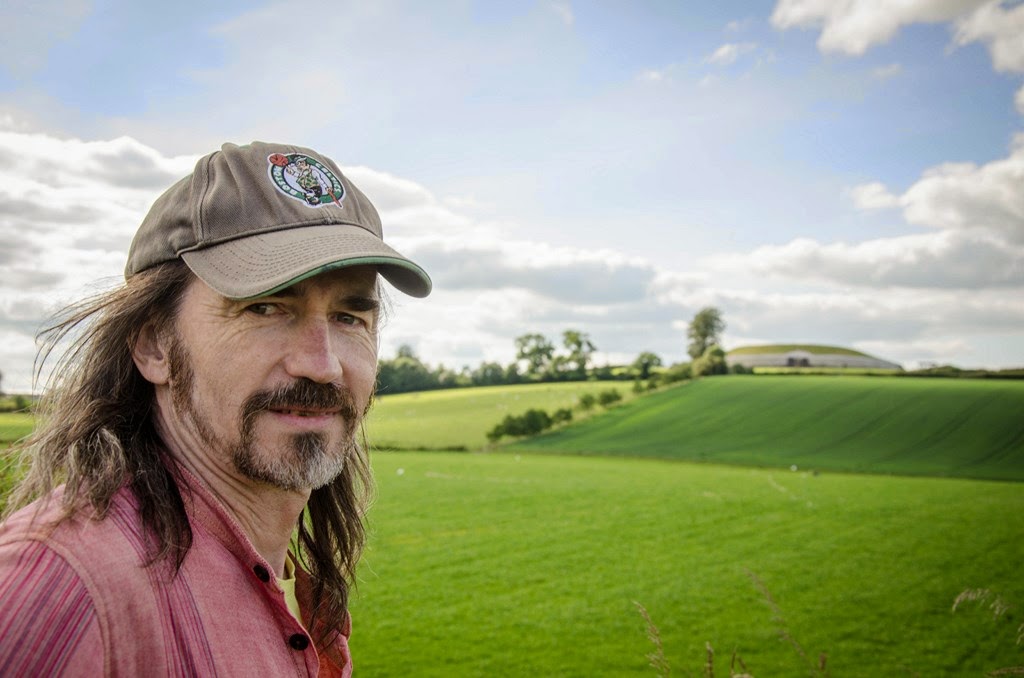
Richard Moore's latest art installation - giant 'High Man' Orion/warrior/hero figure grabbing summer solstice sun
Richard Moore’s latest giant art installation will be completed today, on the summer solstice, in a field in front of Newgrange.
.jpg) |
| These stunning aerial images of the artwork were taken by Noel Meehan of Copter View Ireland (facebook.com/copterviewireland) |
The High Man measures almost 150 metres tall (493 feet) and is situated in such a way that it reflects alignments concerning both winter solstice and summer solstice.
Richard shot to fame on Easter weekend when he created a huge Byzantine image of the face of Jesus in a field in Drogheda, helped by another local artist, Derek McCloskey.
Now the pair have created an even larger image, but this time in the heart of the historic Boyne Valley.
.jpg) |
| Artist Richard Moore at the site of the art near Newgrange. |
The giant heroic figure is located in an area anciently known as Ferrard - from Fer Ard, meaning ‘High Man’. This area stretches right down to the Boyne river, and so Newgrange, Knowth and Dowth were all in this ancient region.
| Midday on summer solstice - Orion holds the sun. |
.jpg) |
| Artist Derek McCloskey, who is helping Richard with the image, demonstrates the pose of the High Man. |
The pair say that the Stone Age builders were advanced astronomers and were also keen surveys, based largely around their comprehensive astronomical knowledge.
The beauty of the new ‘High Man’ creation is that it is positioned in such a way as to reflect both summer solstice and winter solstice.
.jpg) |
| A close-up aerial view of part of the new High Man image. Picture: Noel Meehan, www.facebook.com/copterviewireland |
In addition to this, the figure itself is aligned to mark summer solstice. It is positioned so that it is pointing towards the place on the horizon where the sun rises on summer solstice. If you could darken the sky and see the stars, you would see the giant warrior constellation Orion appearing to ‘carry’ the sun through the sky. It’s quite remarkable,” said Richard.
.jpg) |
||
Richard Moore at work on the 'High Man' image near Newgrange.
|

.jpg)